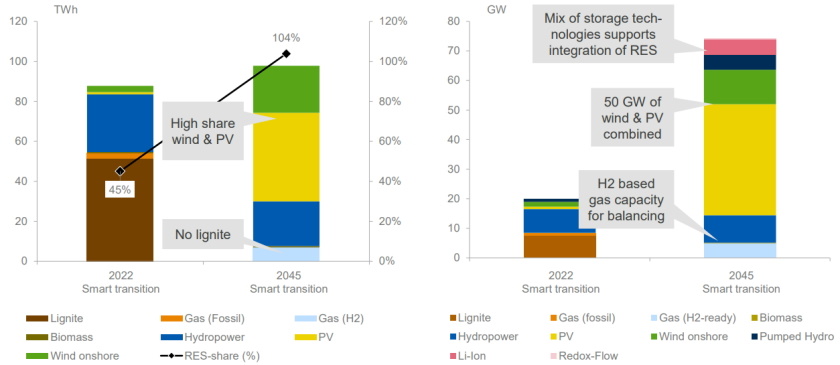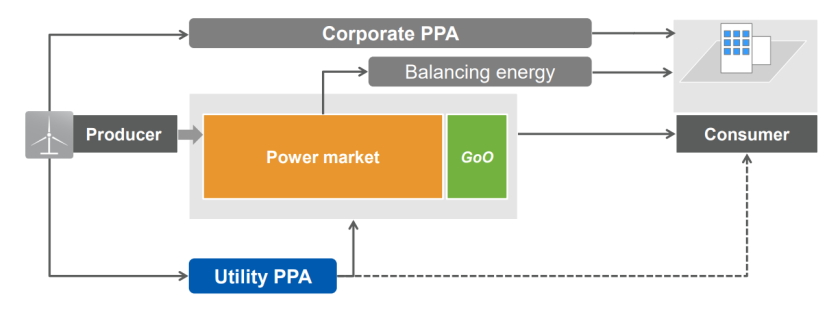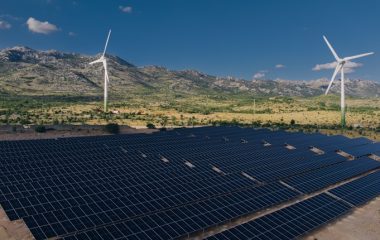
Photo: Sonja Risteska
Western Balkan countries are slowly opening up the renewable energy market. Investors are increasingly interested, which gives financial instruments like power purchase agreements or PPAs a more important role in the process, according to participants at a workshop organized by think tank Agora Energiewende, the Institute for Development Policy (INDEP) from Prishtina and enervis energy advisors.
The event called Renewable Power Purchase Agreements in the Western Balkans – opportunities and obstacles gathered decision makers, investors and other stakeholders under the auspices of the project Towards a Western Balkan Green Deal.
The renewable energy market is designed to provide the security of supply and affordable energy to Kosovo*, Sonja Risteska from Agora Energiewende said at the opening of the workshop in Prishtina. In her view, the concept of leaning on imported fossil fuels from several sources and using gas as a bridge fuel in the energy transition “is slowly dying.”
PPA framework doesn’t require much effort except deregulation
Julius Ecke, a partner in Berlin-based enervis, said tender-based incentives have proved to be cost-efficient for the development of the green energy sector and that they are still needed for some technologies.
On the other hand, merchant renewables have the advantage of requiring no subsidies, being very scalable and not needing a lot of policy. Actually, they require regulators and policymakers to take a step back to let market players take the wheel, he explained. Both mechanisms are useful to be applied simultaneously, Ecke pointed out.
Ecke: Merchant renewables require regulators and policymakers to take a step back to let market players take the wheel
The basic net zero emission scenarios available for the Western Balkans, technically feasible and with no significant additional costs or maybe with smaller costs, imply a coal exit and scaling renewables, he said.
“The last step is to get rid of the last 10% or 20% of CO2 emissions after we have done the first two things. This is the deep decarbonization of the power market. The whole Energy Community needs to think more about it. We presented a strategy that relies on battery storage and hydrogen-based power generation,” Ecke stated.

Total decarbonization in Western Balkans requires 50 GW in green electricity generation capacity
The net zero emissions scenario developed by enervis is more cost-efficient than the path with the current ambition level that the countries in the region pursue, with no coal phaseout, or the one with a transitory switch to gas and a late retrofit to hydrogen, said Rita Kunert from the German consultancy. The modeling was done with an outlook of having decarbonized power system in the Western Balkans by 2045.
In the most optimistic scenario for the Western Balkans lignite is abandoned by 2040
Total decarbonization would transform the regional electric power system currently more than 50% based on lignite into a mix dominated by wind, photovoltaics and hydropower, storage and a share of hydrogen for balancing, the document reveals. The modeling showed that security of supply is maintained and further strengthened through deeper regional integration.

It implies a generation capacity of up to 50 GW in total, integrated by storage technologies and small levels of H2-based gas. In such system the generation costs are 15% lower compared to a choice where lignite and gas are maintained. The cumulated investment for fully decarbonizing the region’s power system is EUR 43 billion for the next 30 years.
Investments are mostly projected in the first 15 years. A sensible lignite reduction path requires 3 GW per year of wind and solar power in the period. The smart transition scenario can also bring a 50% cut in cumulative carbon dioxide emissions.
The full study will be out in September.


















Be the first one to comment on this article.